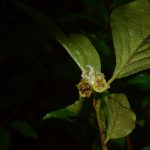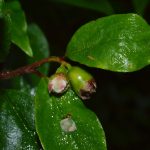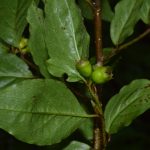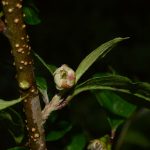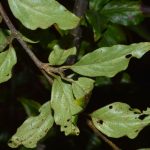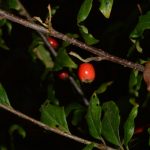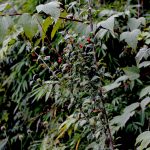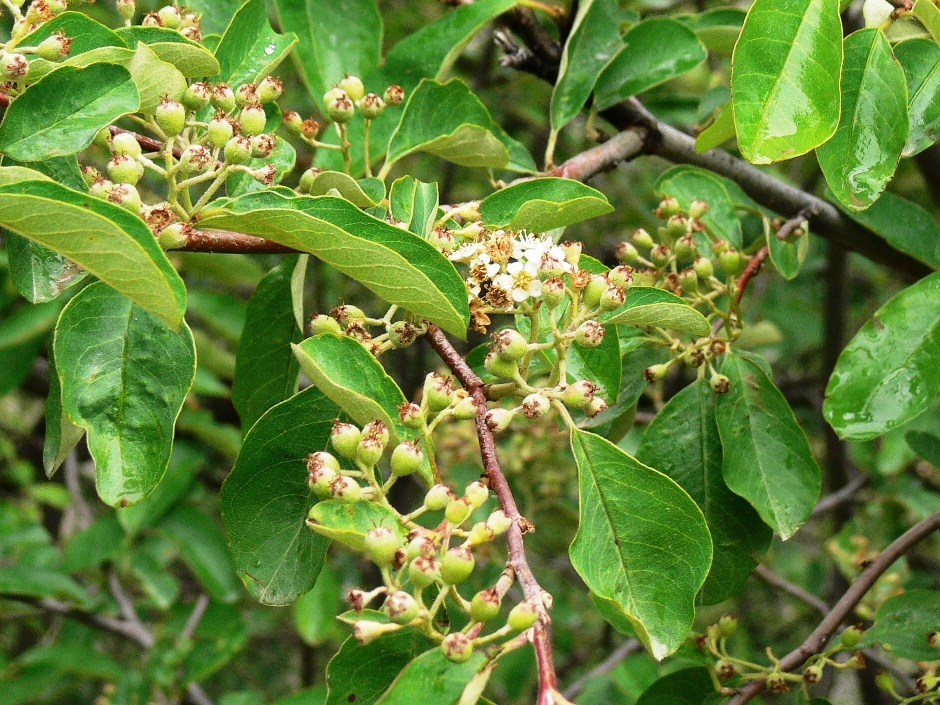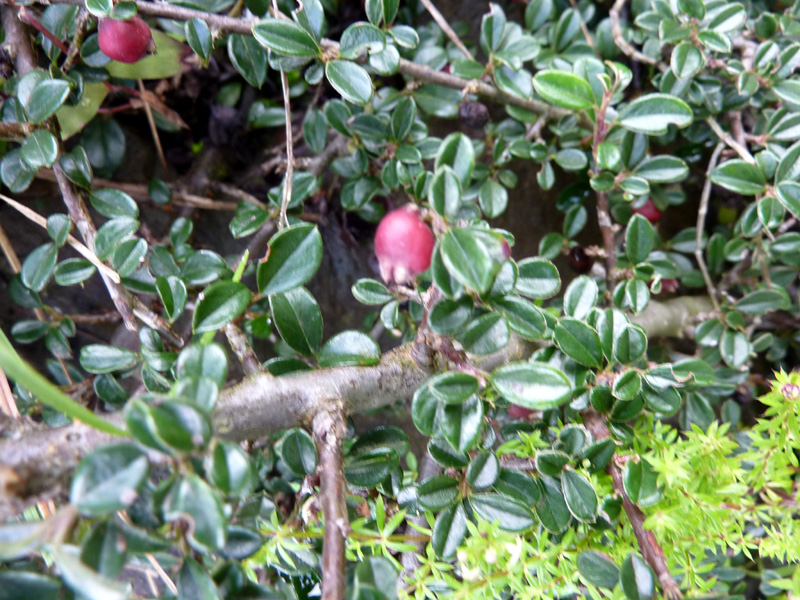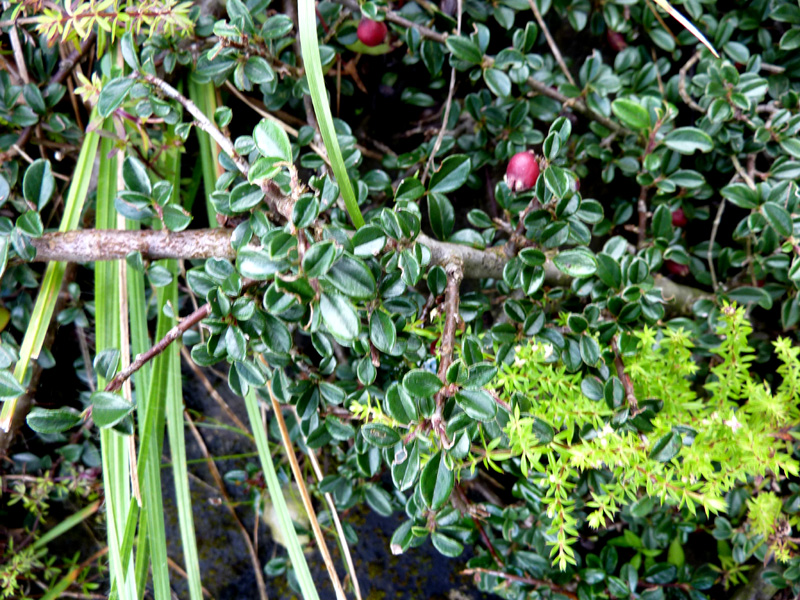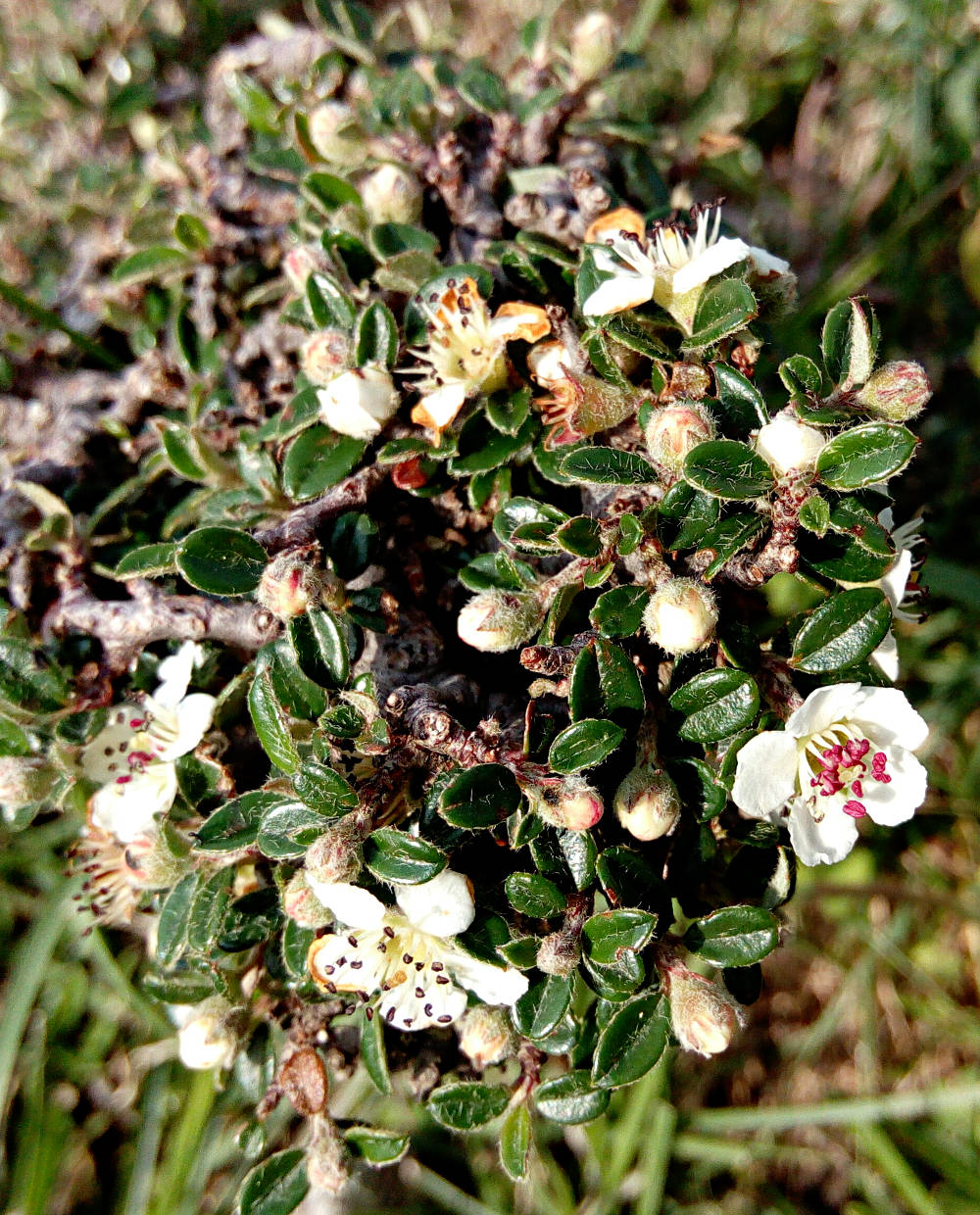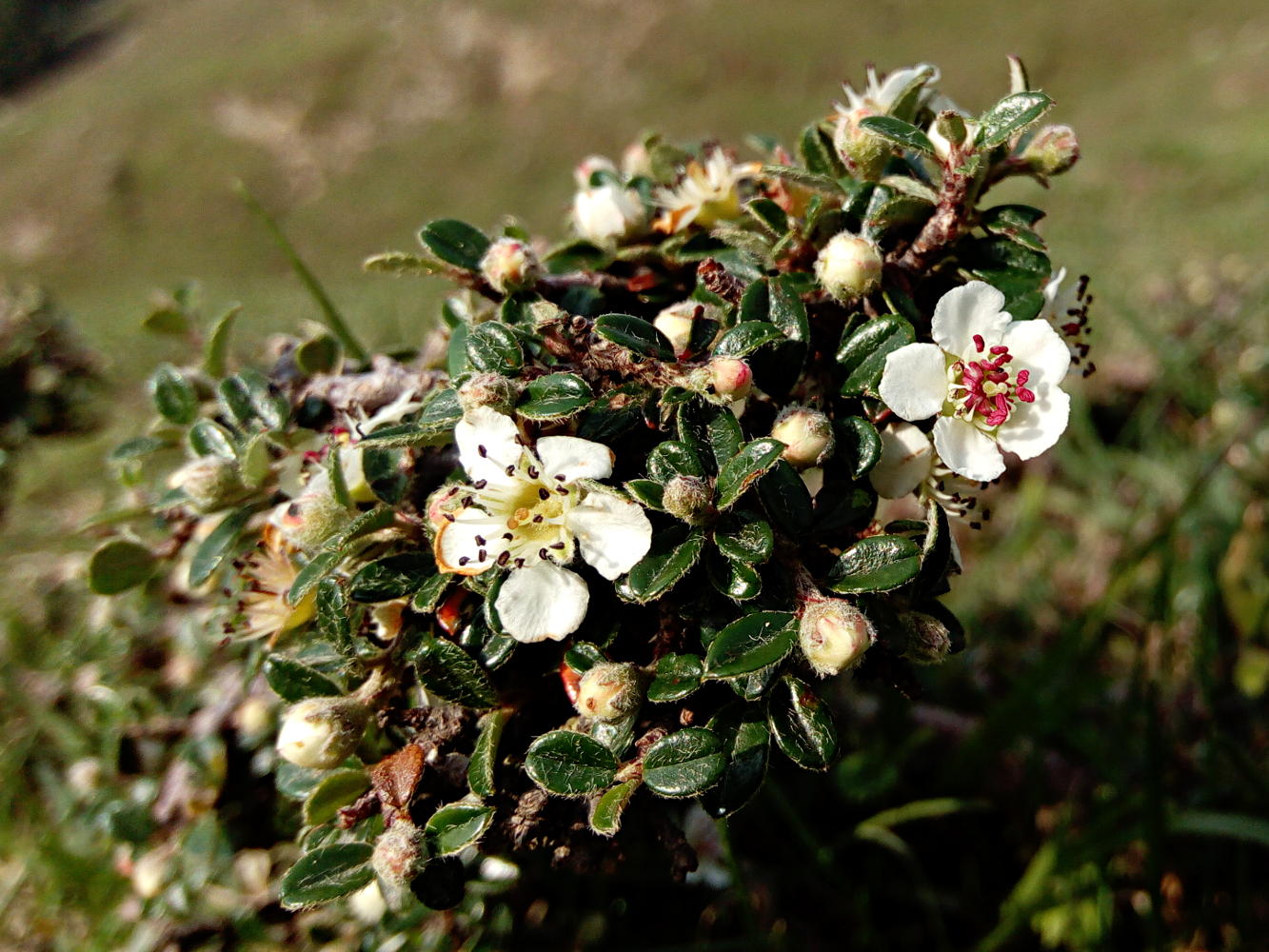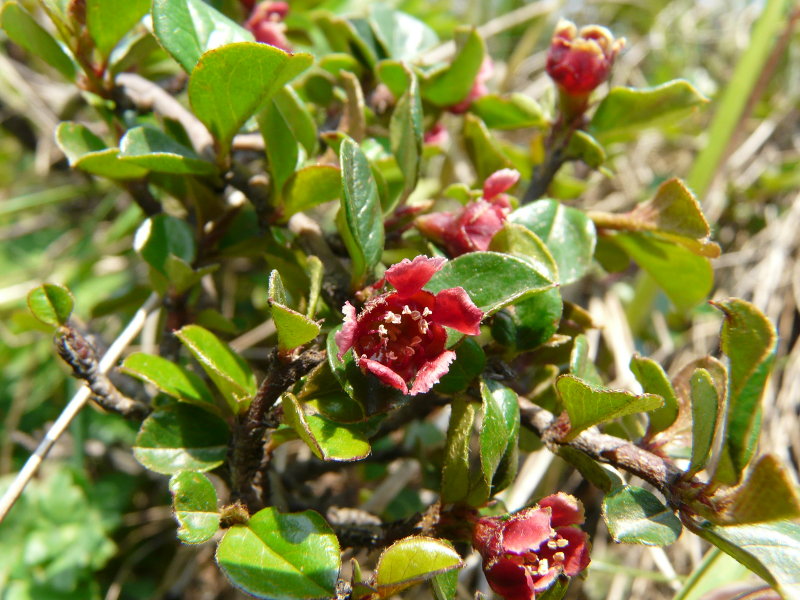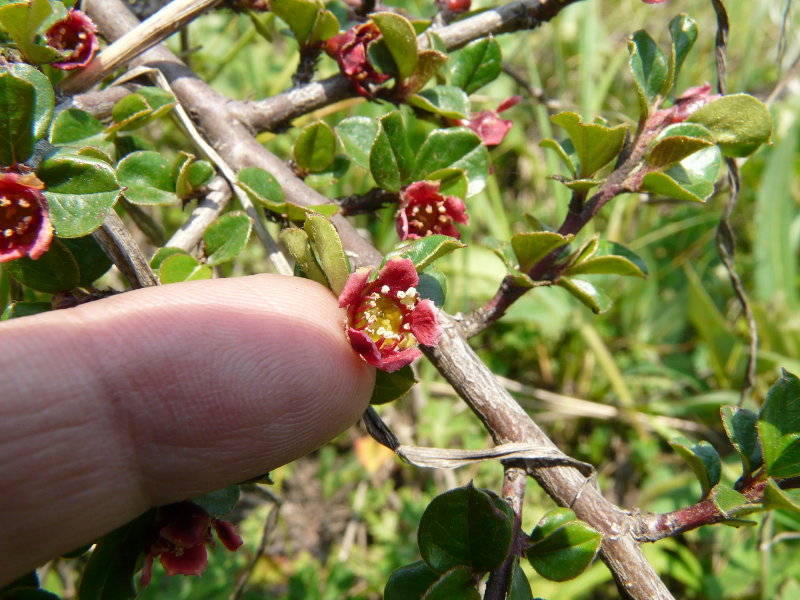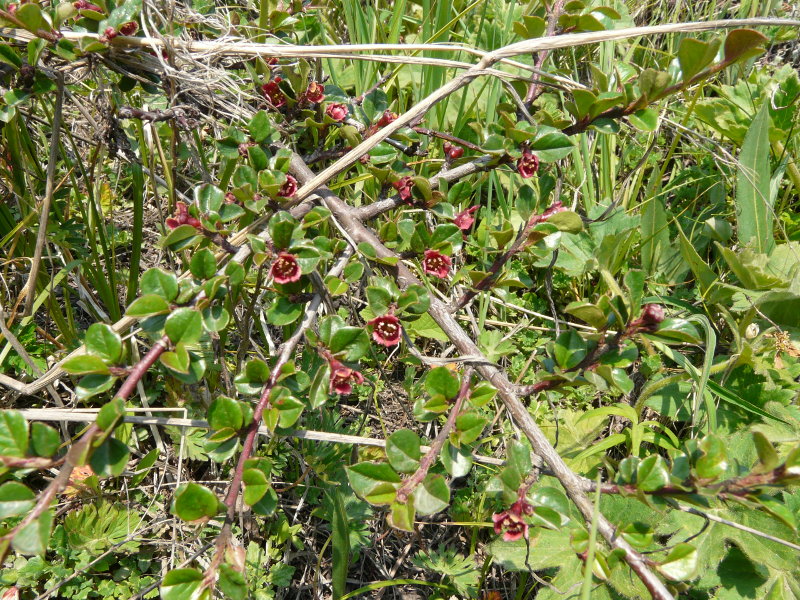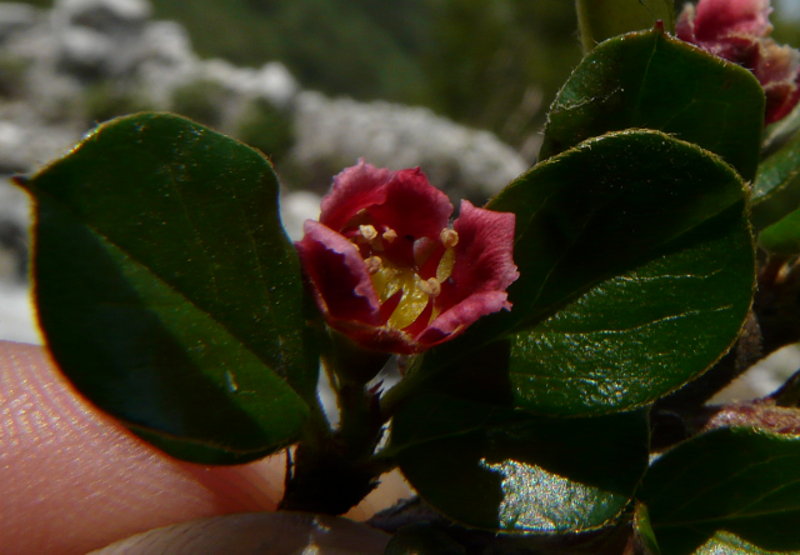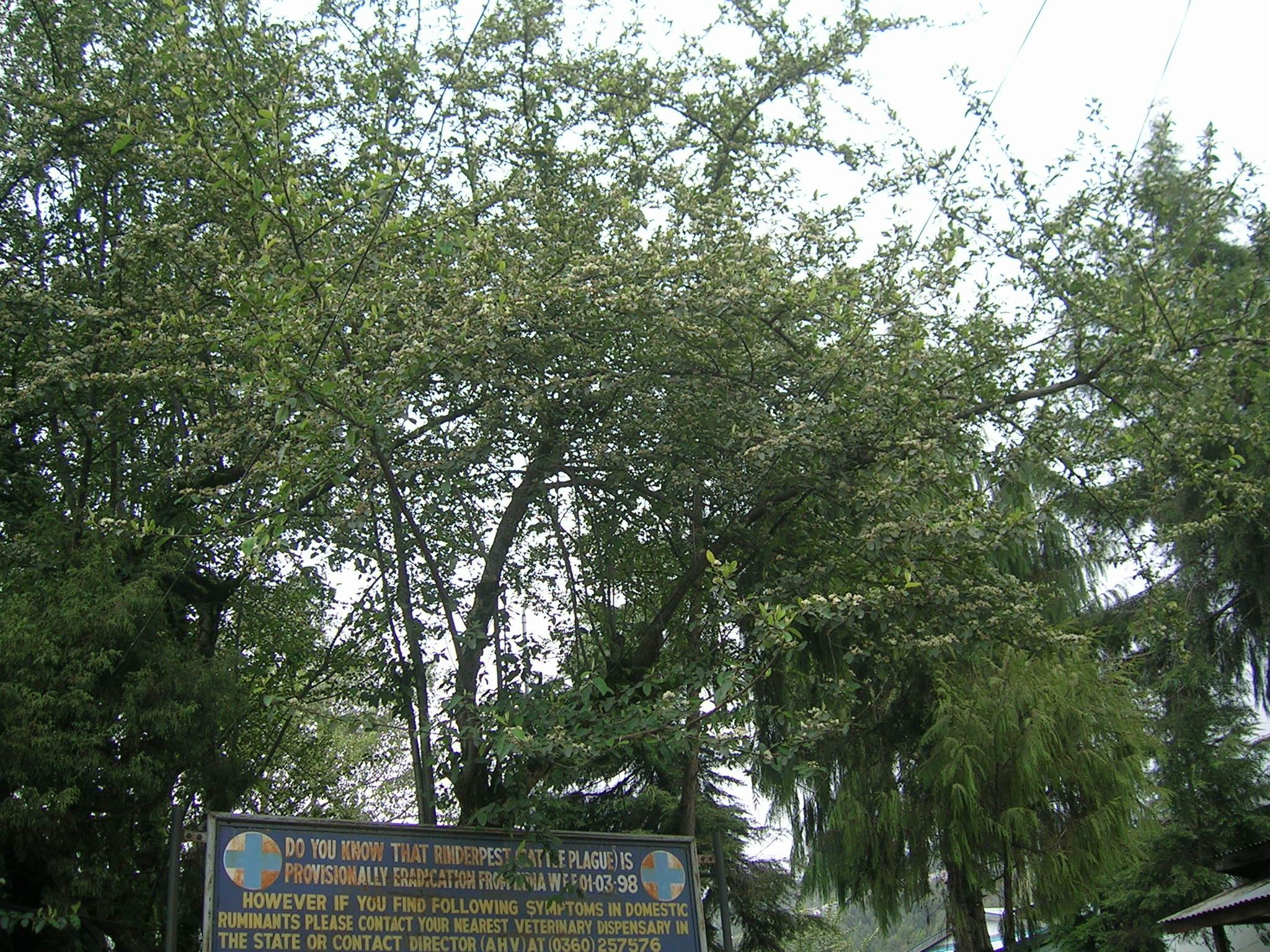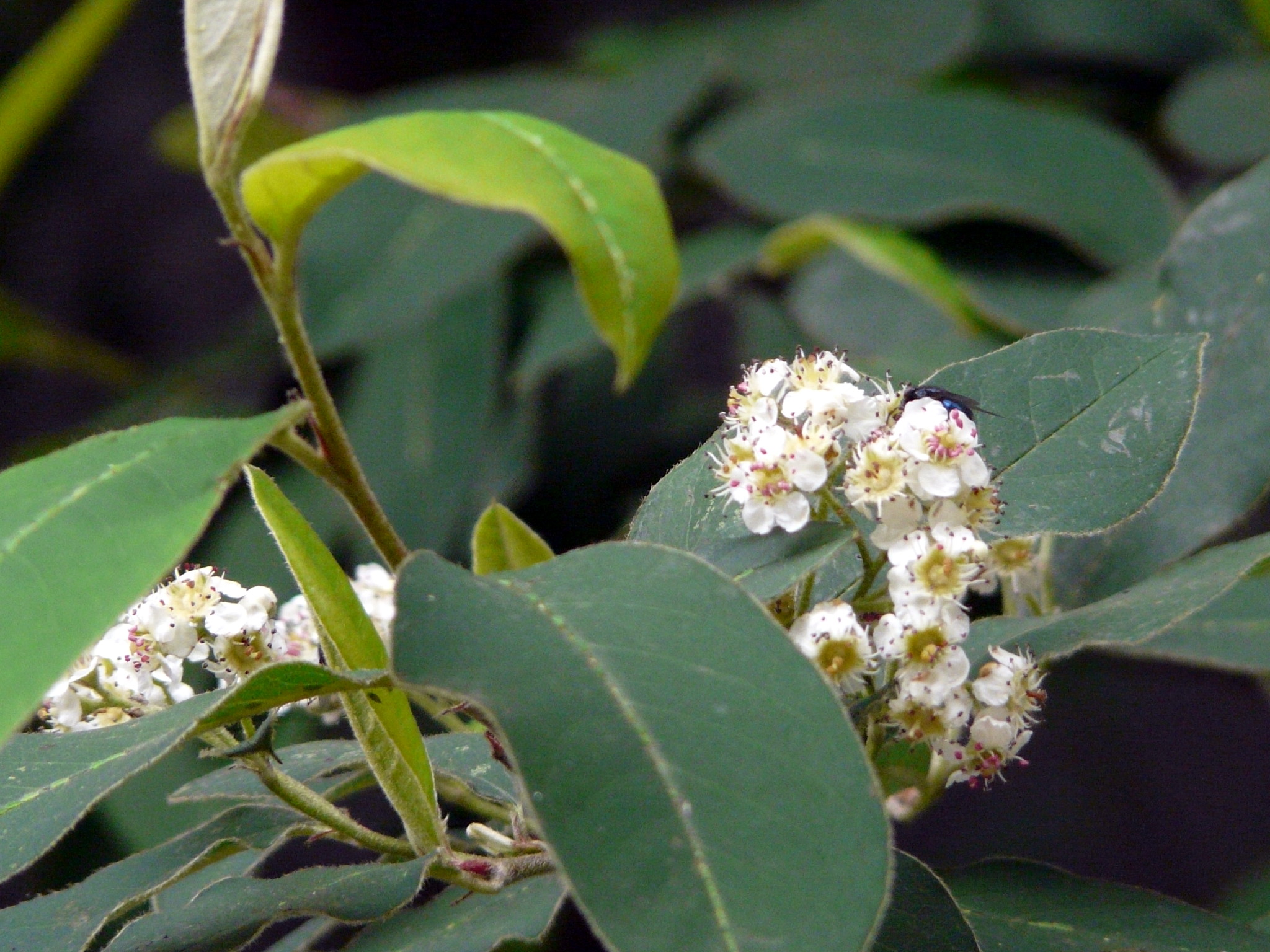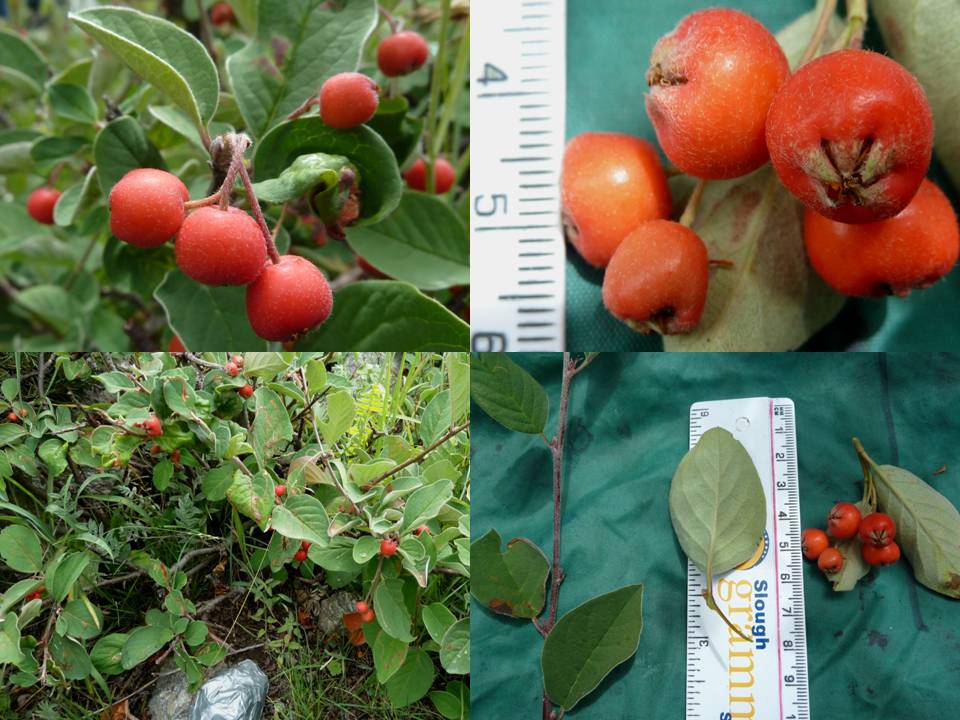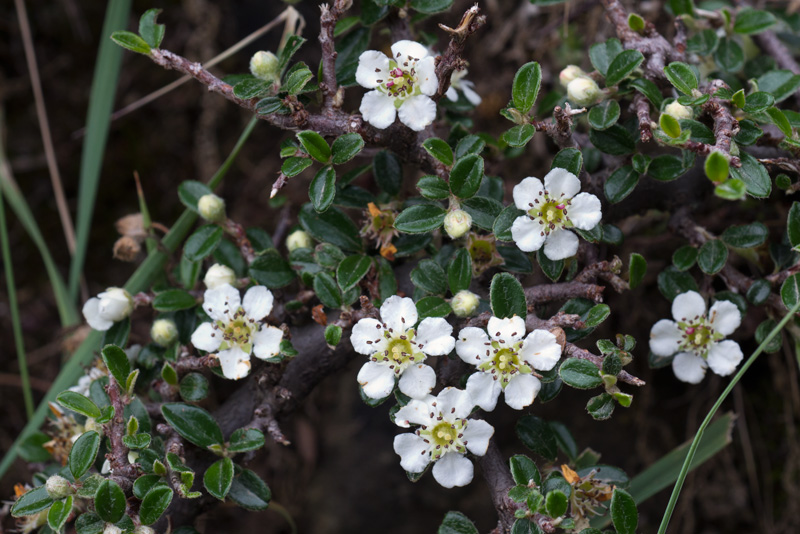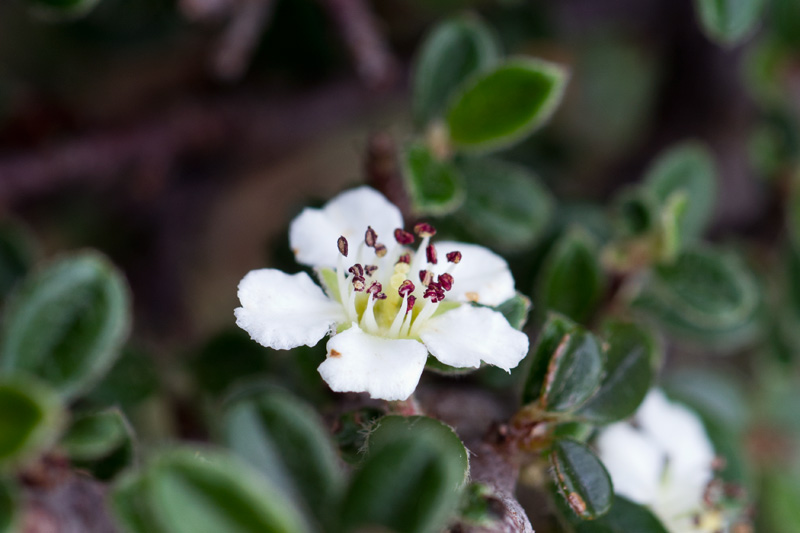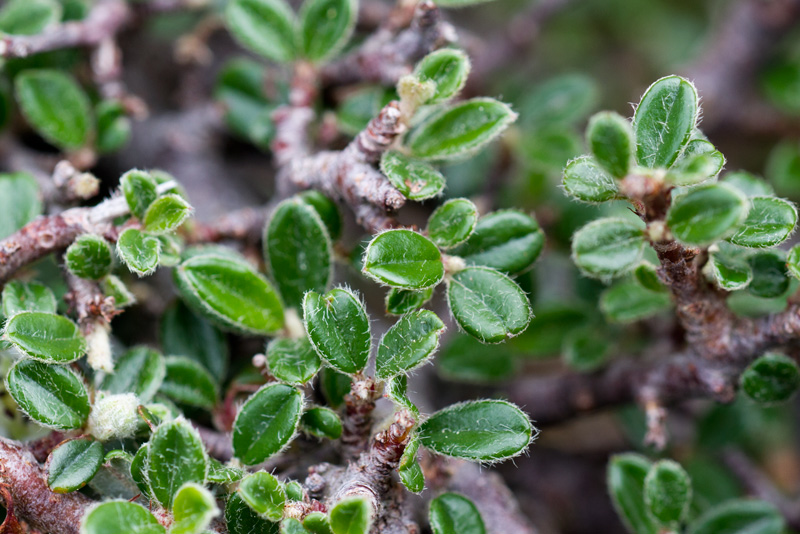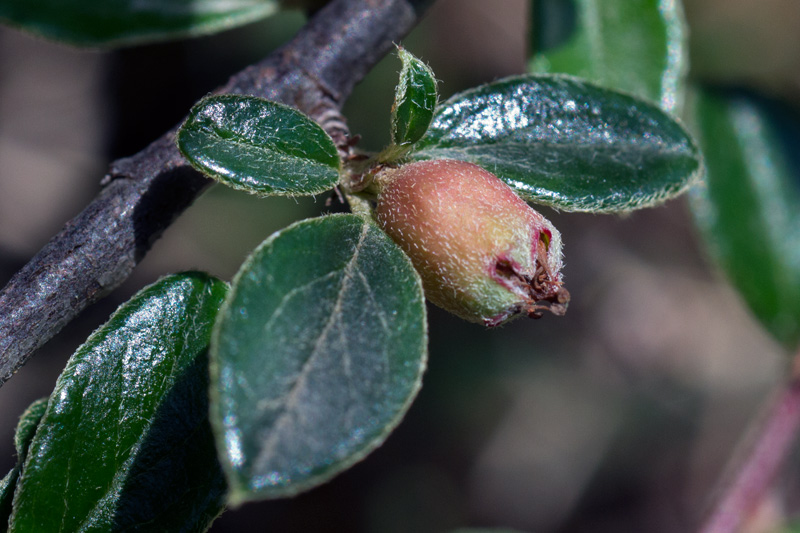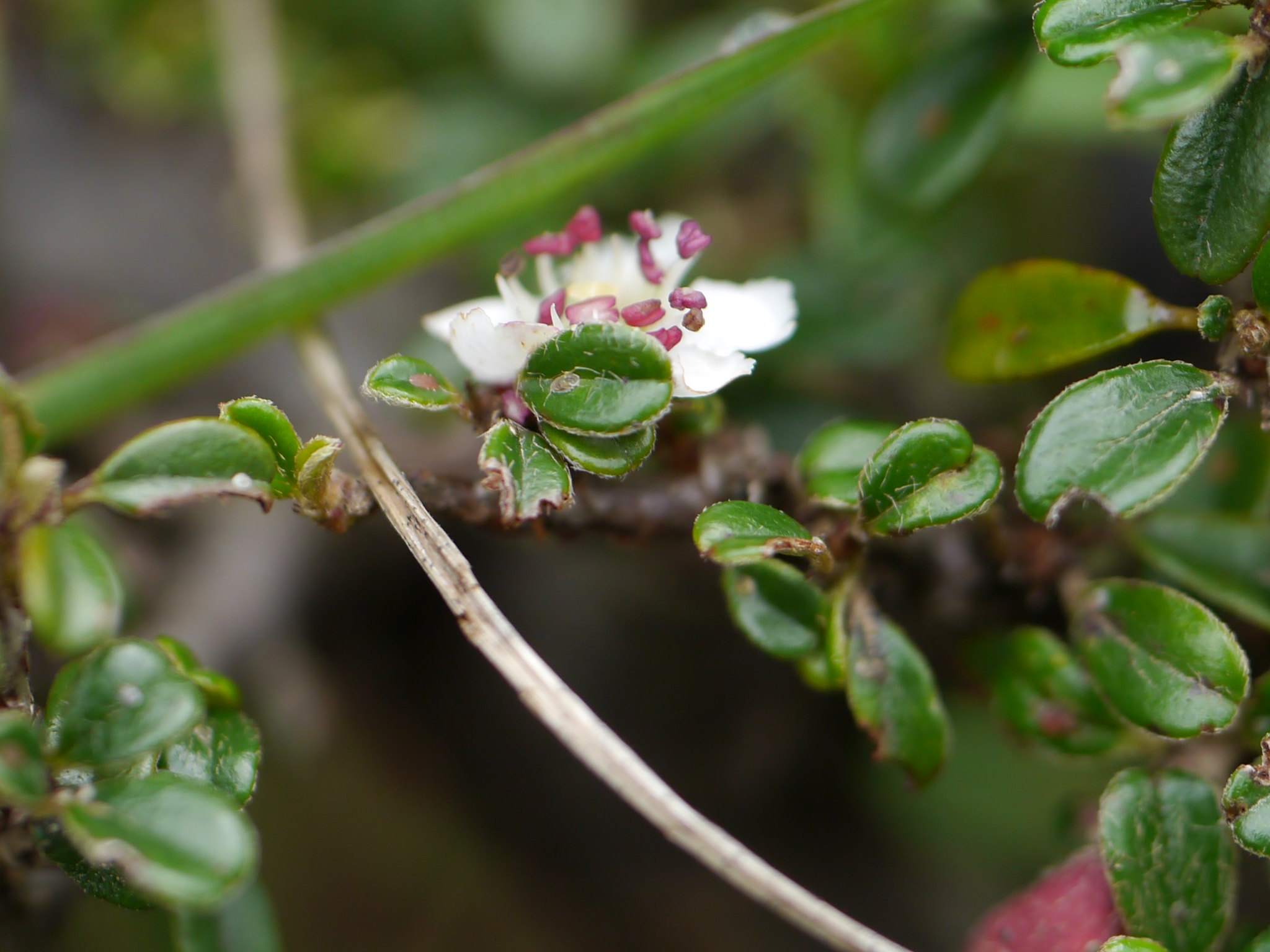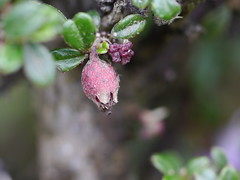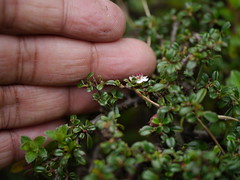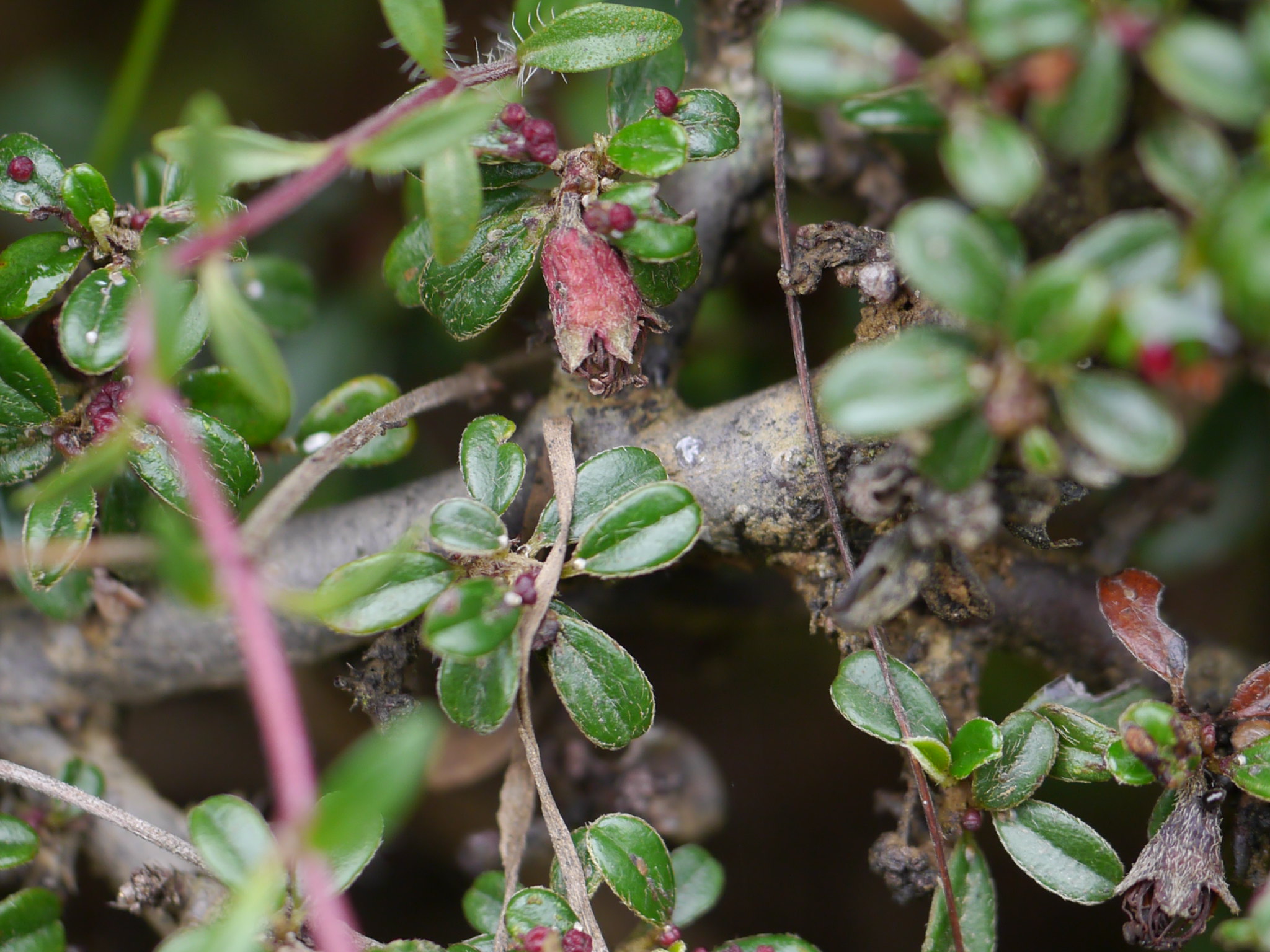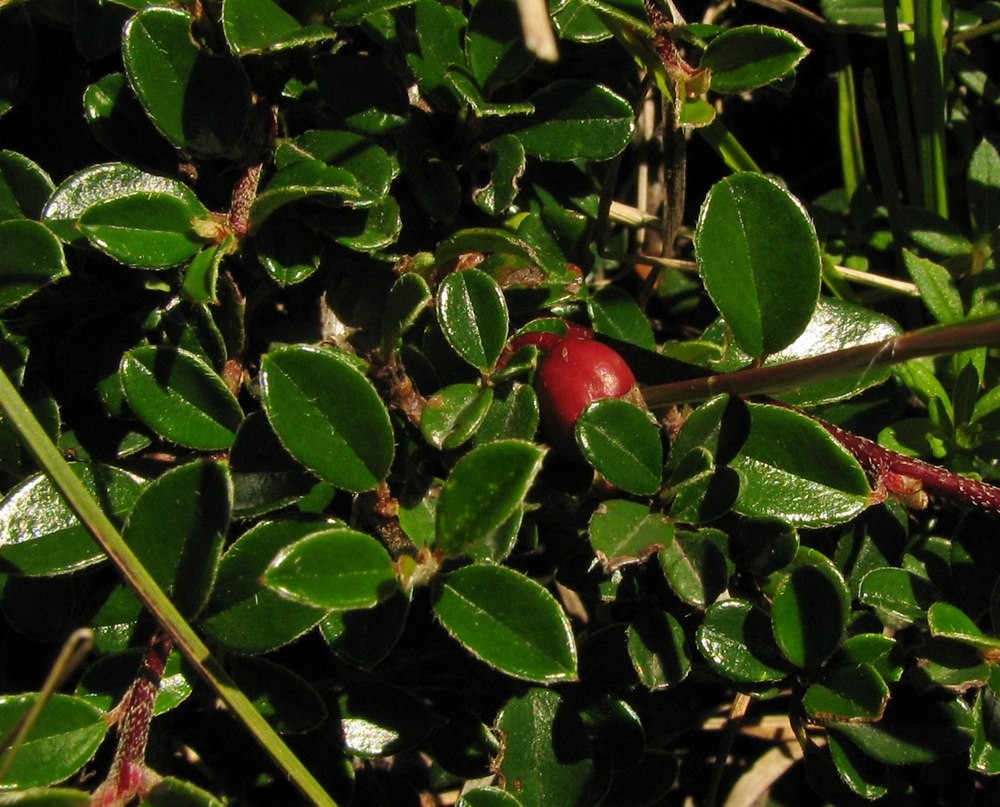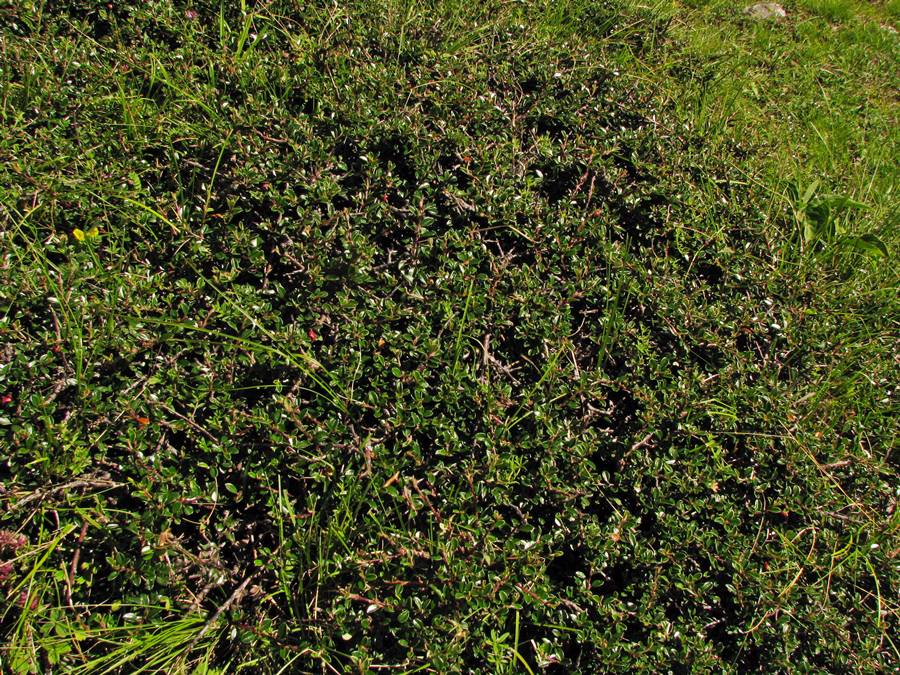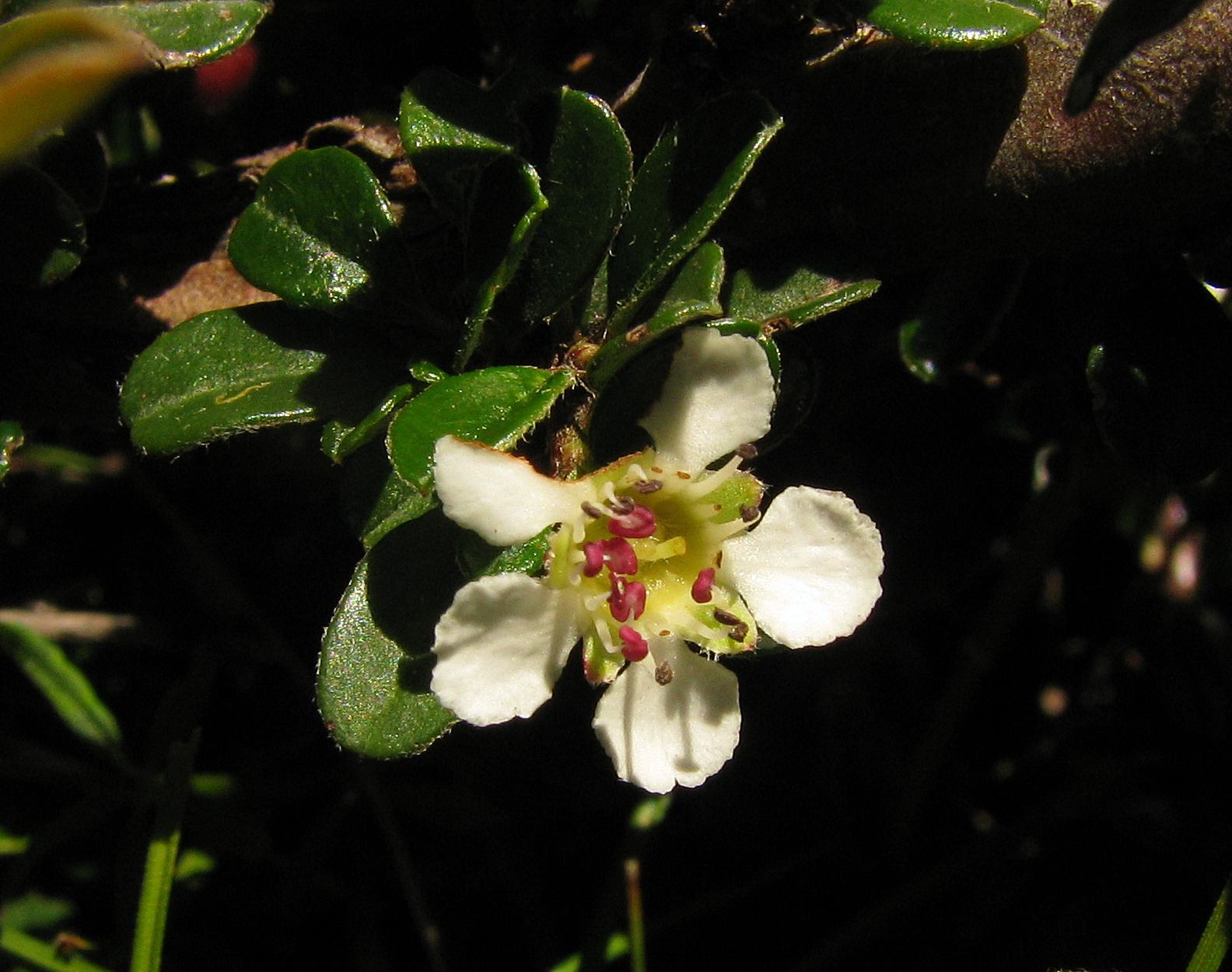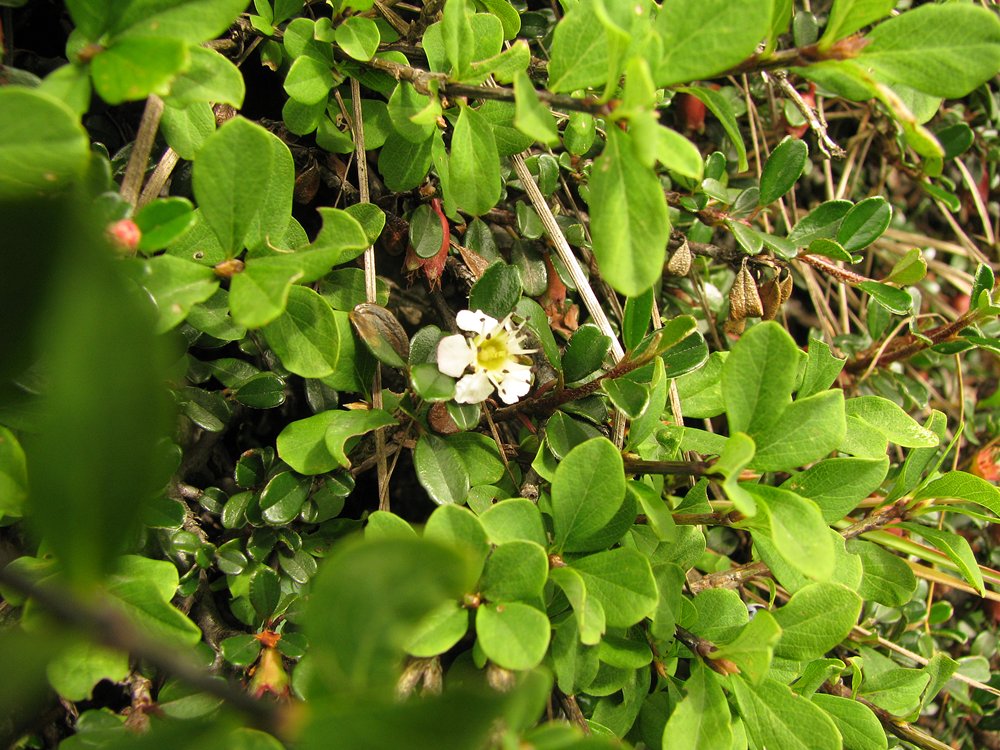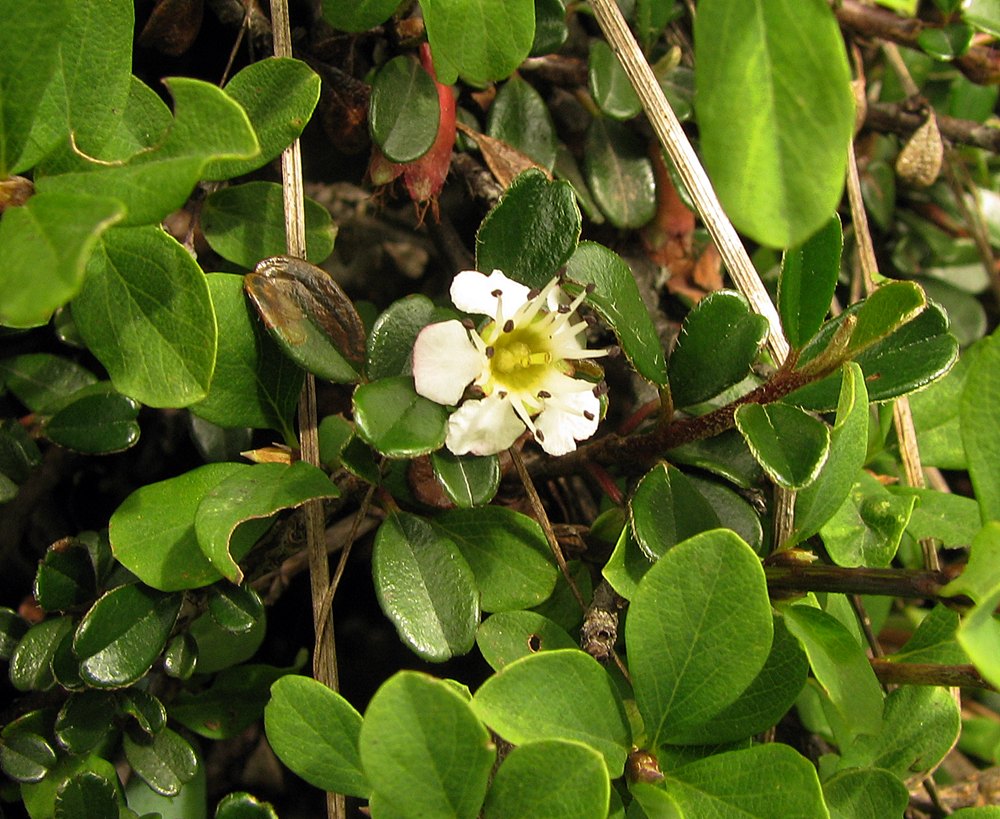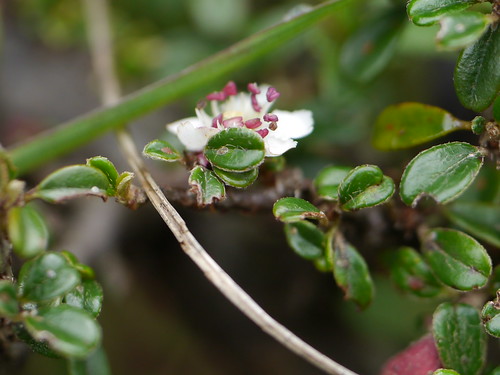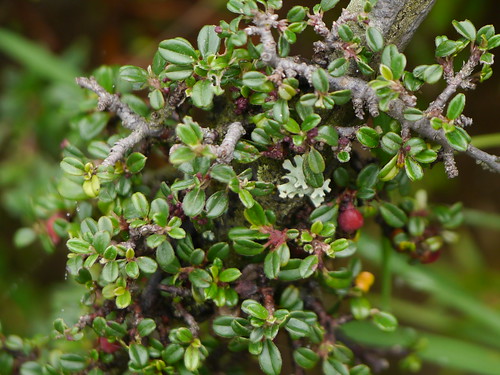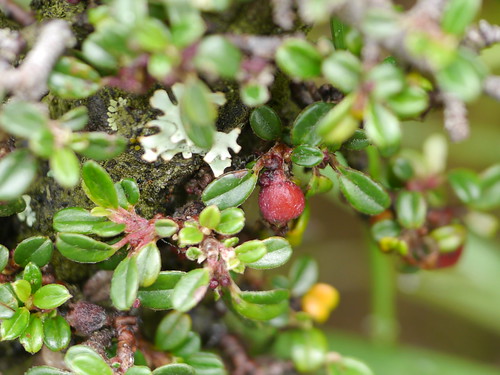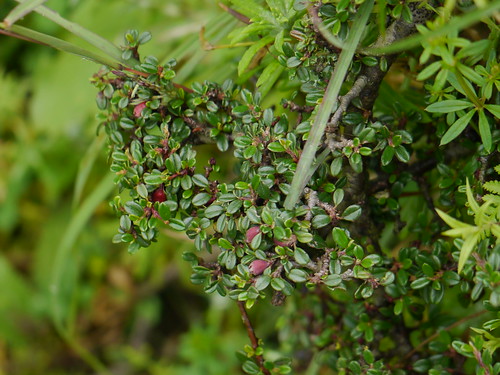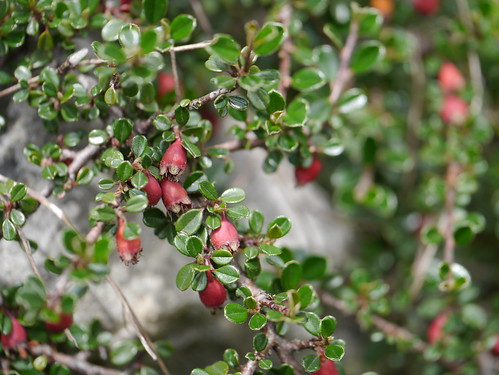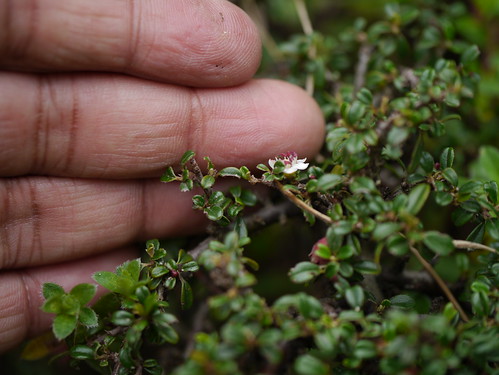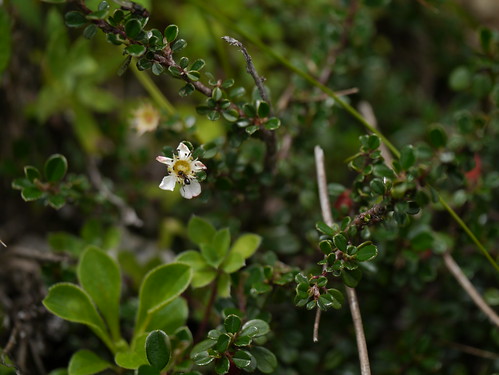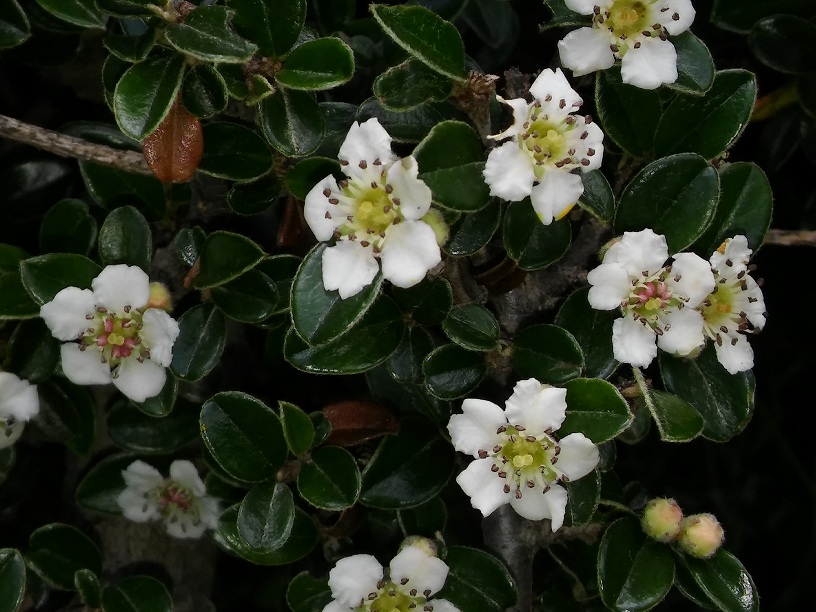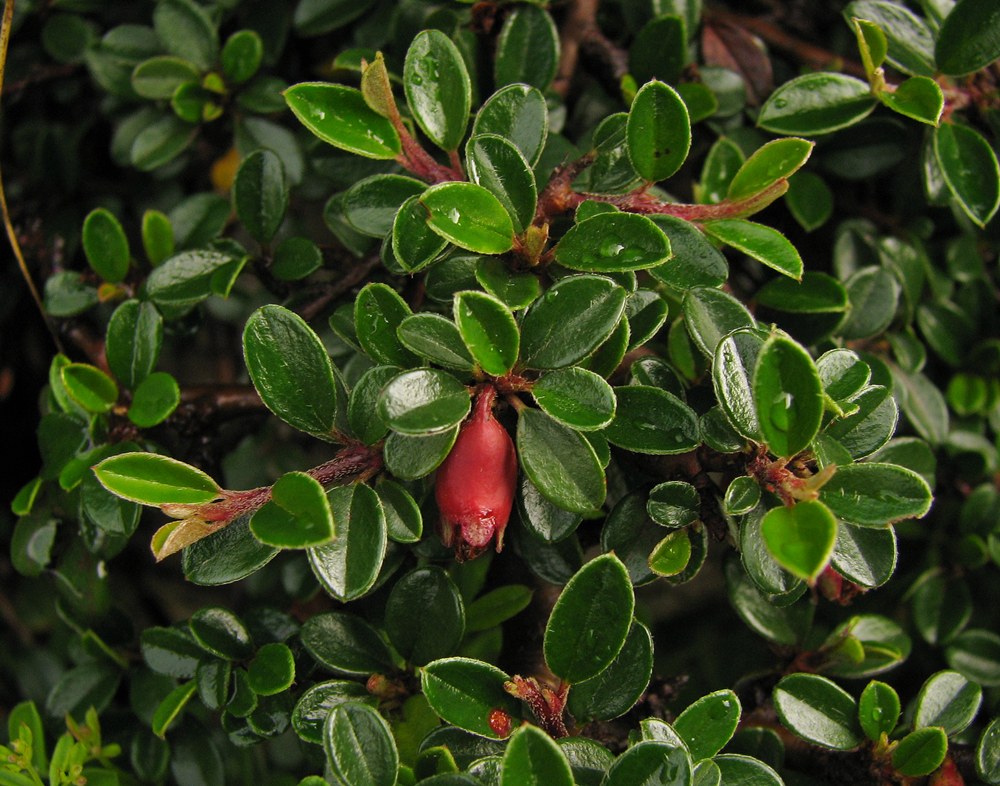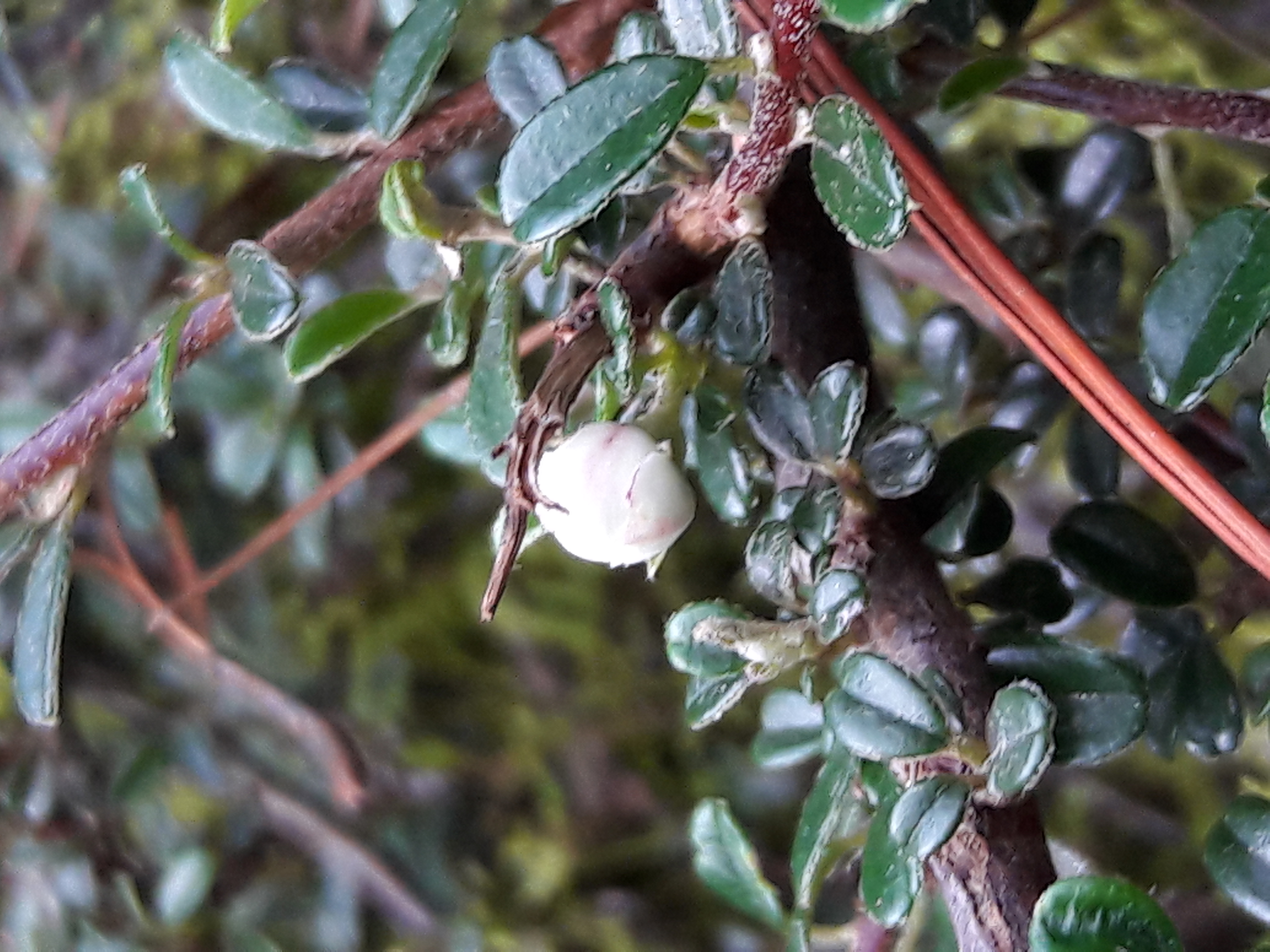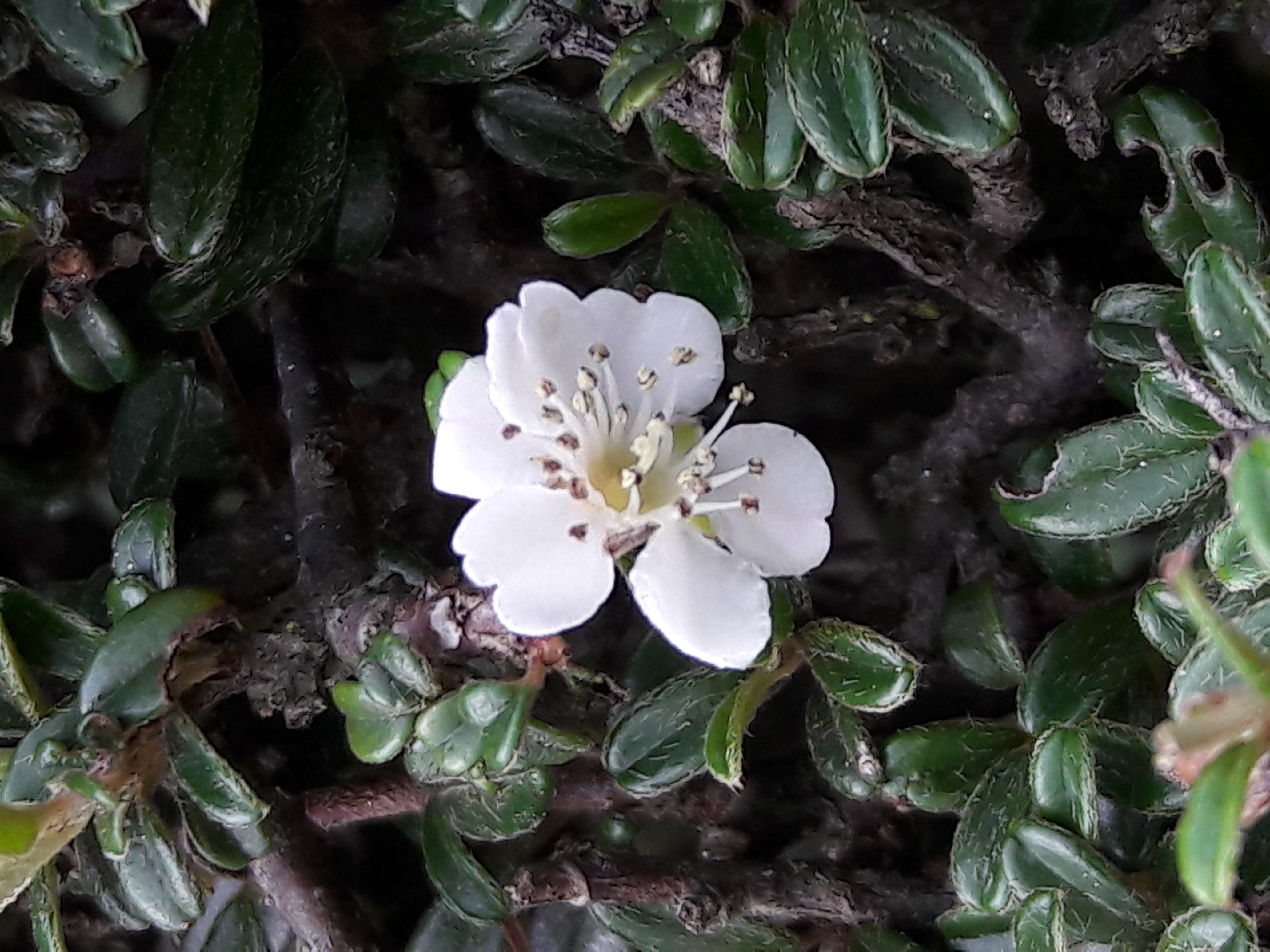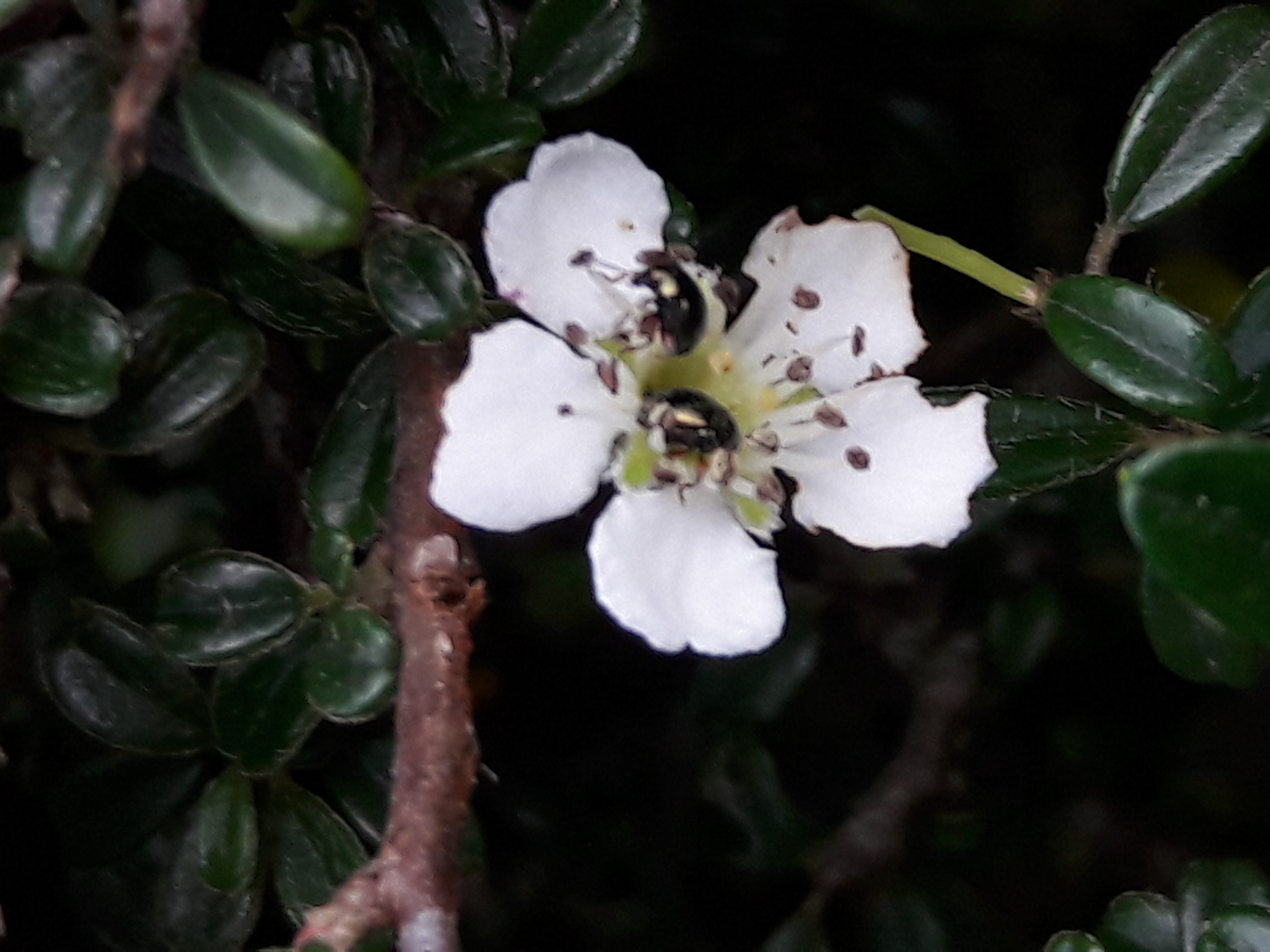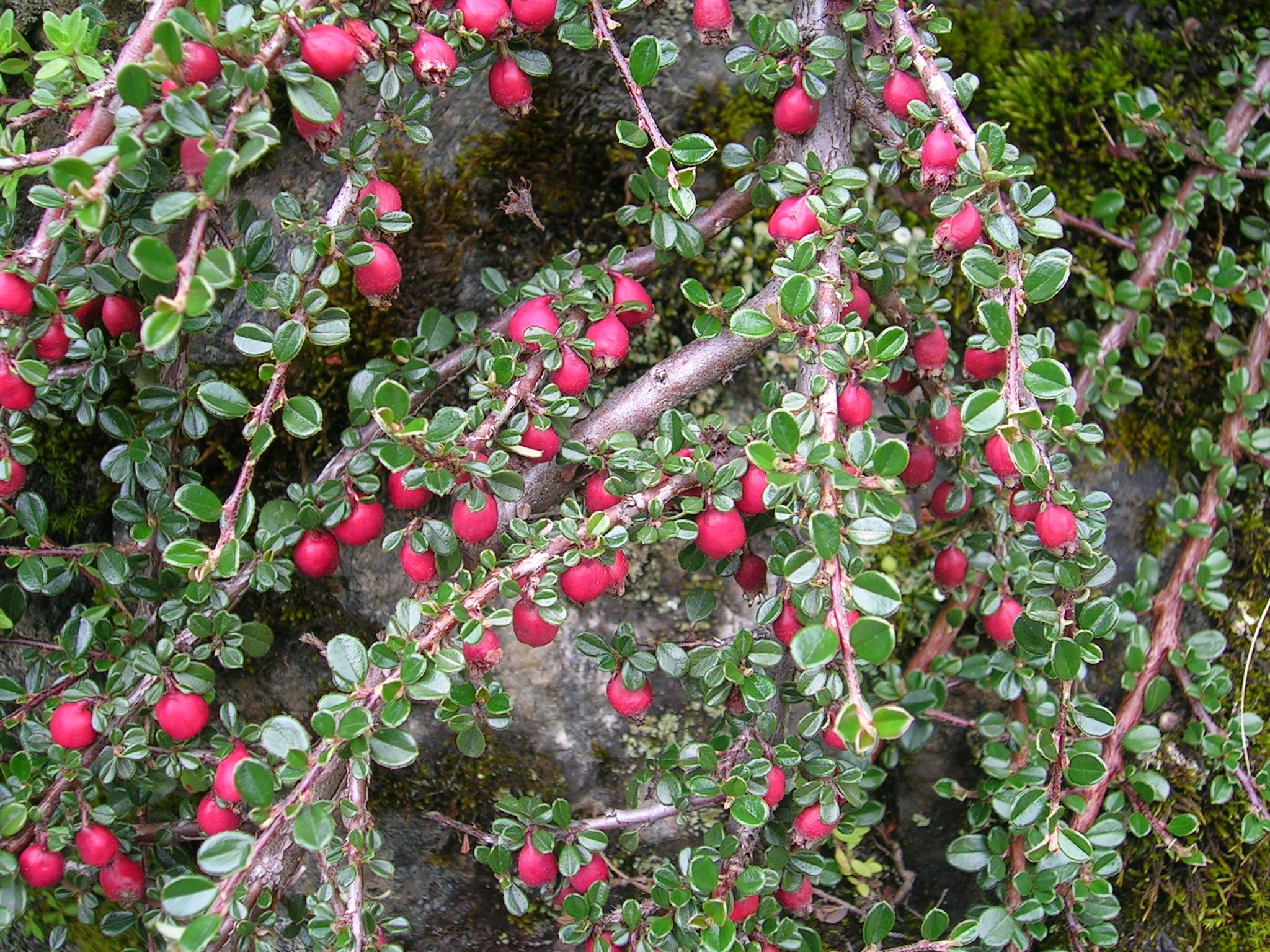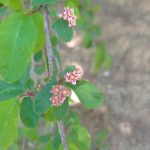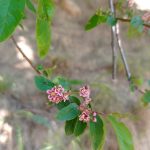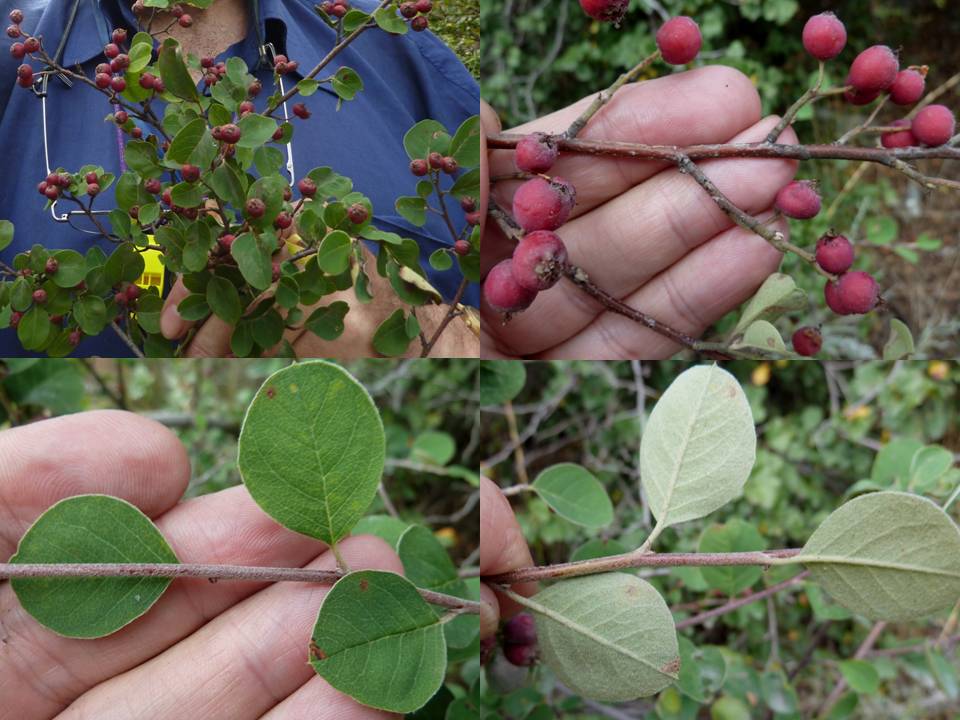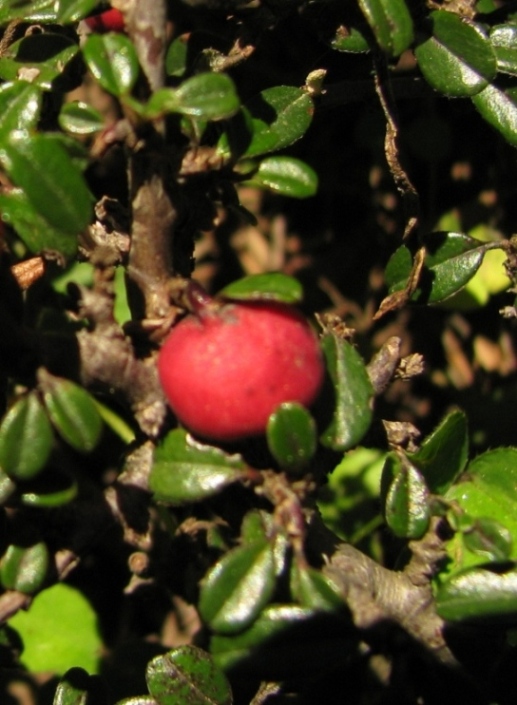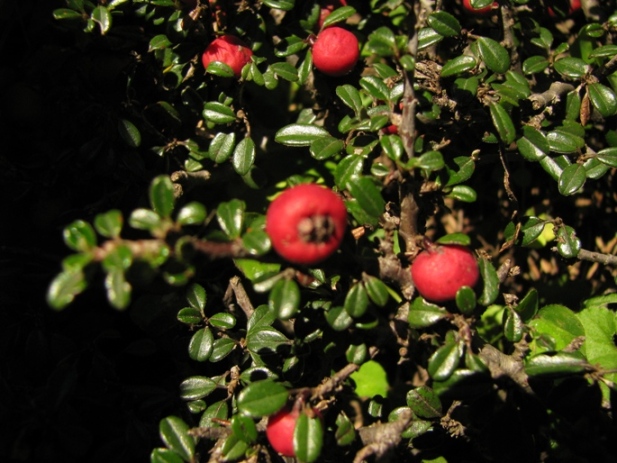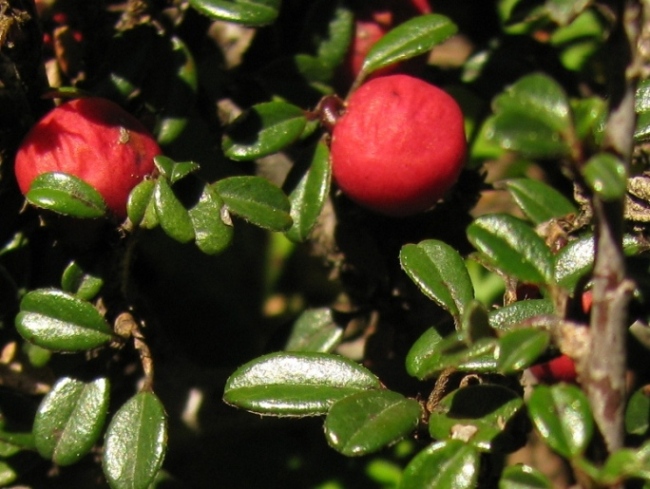|
Cotoneaster horizontalis Decne (Introduced)
Cotoneaster roseus Edgew. (E. Aghanistan to W. Himalaya: Afghanistan, Pakistan, West Himalaya as per POWO) .
.
Account of Cotoneaster in Flora of Nepal is also useful for this genus and this is a relatively recent account. Link may be provided on the page.
Link for Cotoneaster in Flora of Nepal
.
Species with description & pictures in Flowers of India as on 24.3.14:
.
Cotoneaster racemiflorus var. royleana (synonym for Cotoneaster royleanus (Dippel) J. Fryer & B. Hylmö)
.
.
The Family Rosaceae in India: Revisionary studies on Cotoneaster Medik :
Bishen Singh Mahendra Pal Singh – Rosaceae . CRC World Dictionary of Medicinal and Poisonous Plants: Common Names … By Umberto Quattrocchi (2012)- Details-
.
Forest Plants of Eastern India By Amal Bhusan Chaudhuri (1993)-
.
Cotoneaster : 1 post by 1 author.
I have updated eFI (efloraofindia) page on Cotoneaster Attempts have been made to incorporate most of the species available in India & nearby areas with details & keys directly or through links as far as possible. It’s quite possible that there may be some discrepancy in the accepted names & synonyms taken from other links. Species discussed so far in efloraofindia are given at the bottom of the page in the form of links against Subpages. On clicking them one can see all the details. If someone can provide complete list of Indian species with source references it will be wonderful. Any comments/ corrections are welcome. .
Fwd: Identifying and Photographing Cotoneasters : 1 post by 1 author.
I am about to check PRIMULA entries/postings on eFI.
May I make a suggestion to help improve the present poor situation with identification of Cotoneasters. Whilst we are all happy to attempt to make an identification from only I or 2 images, often not in close-up, why not encourage the serious and regular photographers by highlighting which parts of the more difficult genera should be photographed – the important (at times diagnostic) features can be missed unless you know what to look out for or take note of.
What I am suggesting you add to your site is in bold & italicised below.
Back in the days of slide and print film, it was only economic/practical to take 1 or 2 photos per plant. I take pretty good photos using a modest compact digital camera obtained second-hand by my sons from e-Bay. Nowadays such cameras are available in India and anyone able to take trips up into the mountains can afford such cameras. With today’s memory cards and easily re-charged, small batteries, one can pretty much take as many images as one likes. With practice, respectable results can be achieved and once in a routine, taking 10-20 images quickly does not use up that much time. An expensive, complex camera is not required.
Since we have an active specialist for this genus in the UK (albeit not using e-mail but I am able to act as intermediary) who I think will be willing to look at further images of this genus taken in India. I will be posting her a CD containing all available images from efI later today.
But to be fair to Jeanette Fryer, the images taken in the future should be as good and informative as possible and not just one or two general photos which makes it much harder.
She may provide some additional advice but in the mean-time, I think it would be helpful for you to insert an entry along the lines of: ADVICE ON PHOTOGRAPHING COTONEASTERS into the section covering this genus.
The following is based upon the notes she provided for the Botanical Society of Britain & Ireland where she is one of the Panel of Referees and Specialists who are willing to either be sent pressed specimens and/or photos of plants belonging to particular genera growing in the UK by members of that society:
Pressed material is preferred but as this is impractical and would require formal permission from the authorities to collect and send from India, then it must be photos, however, kindly make the following notes including colour of petals, filaments & anthers and/or fruit, plus number of stamens, styles and/or nutlet number in fruit. Be sure to photograph a young non-flowering shoot to illustrate the shape of young leaves. Make sure you carry a x10 or x20 hand lens to help examine the flowers.
For Cotoneasters and all other plants, it is recommended that AT LEAST 10-20 images are taken per plant/specimen from which the best 8-10 (or so) are selected to post. The photos should include habitat, habit of plant, close-ups of the flowers showing both petal and sepal detail plus foliage including upper and lower surface of the leaves.
You can look at my recent posting for Cotoneaster humilis to get an idea of what to aim for. Anyone wishing further advice on plant photography is welcome to contact me. . Fwd: Photographing Cotoneasters when in fruit: how it should be done : 1 post by 1 author. Attachments (12)
Have decided to share with group members how best to go about naming a Cotoneaster from photographs rather than taking pressed specimens, the traditional way of naming plants (which would apply to most genera at the fruiting stage, though for different genera particular characteristics many be especially important). Next summer I shall take a set of photos of this specimen in flower. I trust you will see how by taking extra photos and selecting the best to post provides so much more information, aiding the identification process. One does not need to take as many as I did on this occasion; I typically take 15-30 for plants in flower or fruit if it is a plant I am uncertain about or is photogenic. As I inspect postings of different genera on efI I shall recommend which parts/ characteristics need special attention for each of the more difficult genera to identify.
I recently photographed a naturalised Cotoneaster (presumably spread by a bird from a garden plant) in my local village in the UK. Neglected to carry a ruler with me as I recommended.
I originally took 75 photos (being digital these cost nothing and did not take me long) which after I quickly checked through, 20 were deleted due to not being fully in focus or not exposed well etc. From the remainder, 12 have been chosen to post to show the various features of the plant incl. the number of nutlets in the fruits.
See attached images.
By taking more photos (rather than just I or 2), looking at them closely on a computer screen and selecting the best to show various characteristics you will familiarise yourself better with each species in the wild and help you notice any differences with similar specimens to
help decide on whether it is worth photographing in expectation that it might prove to be a different species of the genus. It will also enable you to note where a particular species grows and how common or uncommon it is. This is useful information.
I imagine some reading these notes may be shocked by the number of photos taken (particular if they have not embraced digital photography yet) and imagine it to be too time-consuming but once you get into the routine (and habit) of taking many photos and editing/selecting on a computer screen, you speed up. But do need to be methodical and organised. / Fwd: Cotoneasters determined by Jeanette Fryer – Images sent by Dr Thakur : 1 post by 1 author.
Have completed the first of SEVERAL parts of material named by Jeanette.
This had 5 postings by Dr Thakur – 4 of which were new species for eFI, 3 having previously been thought to be C.microphyllus.
An indication of a major shake-up in understanding of this genus in the Himalaya – and further evidence of the need for specialist input into the study of genera in this region.
Jeanette deserves our appreciation for her accumulated knowledge and dedication – along with a willingness to contribute to eFI. Not all those with specialist knowledge are so willing.
. Fwd: Cotoneasters sent for naming by Jeanette Fryer : 3 posts by 3 authors.
I am pleased to announce that I have just received a CD back from Jeanette as to her thoughts about the identification of the Cotoneaster images which were on eFI. As anticipated, this has taken months. She is busy with other matters plus is regularly sent pressed specimens and photos to be identified, when time permits.
Indeed, it cost her £30 to hire a computer expert to open some of the files! I can assure members that NOT ALL Britishers are wealthy. £30 is a significant amount – as it is for me…..
The images taken in India which I sent to her on a CD (she does not use the internet), has as involved a LOT of time and effort on her part. eFI members are fortunate indeed to have those with specialist knowledge prepared to devote time TRYING to help.
I consider everyone submitting photos of Cotoneaster in the future should TRY hard to photograph the parts of the plant REQUIRED to provide an accurate and reliable identification – known as a DETERMINATION. Doing this makes it easier, rather than more difficult and time-consuming for her.
It was not easy for her as many of the images show no sterile shoot leaves visible – ONLY close-ups of flowers and/or fruit). In future it would be a great help if a few leaves were turned over so that she could see if they are glabrous or tomentose etc.
Some of the pictures were not of good quality and pixilate when trying to zoom in on details. She did her best with these.
I HOPE she will be willing to ATTEMPT to DETERMINE images of Cotoneaster submitted to efi in the future but it must be said that it is up to member’s to HELP.
Jeanette is the Botanical Society of the British Isles REFEREE (Specialist) for COTONEASTER.
I consider it will be useful if the following advice she provided is read by anyone likely to be photographing Cotoneasters in the future. I realise some of this refers to PRESSED SPECIMENS but is still relevant:
COTONEASTERS FOR DETERMINATION.
‘When sending specimens to me for determination, please send them between papers – not in polythene, as
I am often away from home. Also, may I remind BSBI members that it saves a lot of time if you include with the specimen the vice-county number, grid reference, location, situation (growing on top of a wall or in the shade etc.),
height and habitat, and if applicable, petal, filament and other colour or fruit colour. Also, if possible, include a sterile shoot of the current year’s growth (the leaves of this shoot are extremely important when identifying Cotoneasters). And please remember to give me the date of collection of the specimen.
The notes above will help members to know which parts of Cotoneaster NEED to be photographed along with accompanying field notes. IF your photos represent a TRUE reproduction of the colour of the petals (plus other floral parts) and/or fruits, that is fine. IF NOT, the colours observed “in then field should be noted”.
I shall gradually post the DETERMINATIONS provided. Thanks to Jeanette Fryer and Chadwell Ji for the efforts in identifying these Cotoneasters. I shall pass on your thanks to Jeanette for her help with a difficult genus.
I am hoping that in future, those coming across Cotoneaster in the wild will take more photos (for advice on doing this see: efi thread).
MANY more postings are required to understand the genus better in the Himalaya.
Hopefully, Jeanette will continue to be willing to ATTEMPT to name these. Members should always TAKE ADVANTAGE of the availability of those with specialist knowledge – one never knows how many more years (fingers crossed, decades) such individuals can continue.
The same applies to me – whether it be months, years or decades……
eFI has made much progress in the decade it has been going (in various forms) but there is LOTS MORE to be done.
Keys are always a challenge to prepare. Not all keys are of good quality. I tend NOT to rely on keys that much, certainly not keys ALONE.
ALL Institutions in India involved with Himalayan flora in any way should purchase a copy of ‘Cotoneasters – a comprehensive guide to shrubs for flowers, fruit & foliage’ (Jeanette Fryer & Bertil Hylmo). Published by Timber Press, 2009. Price at Publication: £30.
Second-hand copies are available from c. £15 plus c.£3 p&p in UK. I am sure arrangements could be made to have them sent directly to India. Many people from India live in the UK. I am sure most members of this group either have relatives or friends living in UK (or US where it can also be obtained) who could easily obtain a copy and have it posted or taken to India. Given the price of some books (this has good quality photos), it is a bargain whether bough new or second-hand.
Though this book is not the FINAL WORD on Cotoneaster and does not just cover those found in India (there are many from China).
. Cotoneaster (Rosaceae) page with images of species in efloraofindia : 5 posts by 1 author.
Pl. go through Cotoneaster (Rosaceae) page with images of species in efloraofindia. If you find any incorrect identification, pl. let us know. If anybody can send images of other species of this genera (for incorporation in the website), if any, or can identify unidentified images, it will be really nice. Thanks … for the nice compilation and spent your precious time. this page was a lot of work. my hats of to you, … Congratulations, Sir. This is indeed a very confusing genus. Thanks for including many of my uploads, Sir. I am trying to procure the book Cotoneasters by Fryer fir knowing this genus more. Thanks, …, That would be wonderful. It is nicely done. Account of Cotoneaster in Flora of Nepal is also useful for this genus and this is a relatively recent account. Link may be provided on the page.
Link for Cotoneaster in Flora of Nepal –
http://www.floraofnepal.org/accountlibrary?name=Cotoneaster&rank=Genus Thanks, …, for the valuable resource.
… may try to identify his post at Cotoneaster species- Deurali, Dolkha, Nepal from this.
|
Cotoneaster
Updated on November 5, 2025

